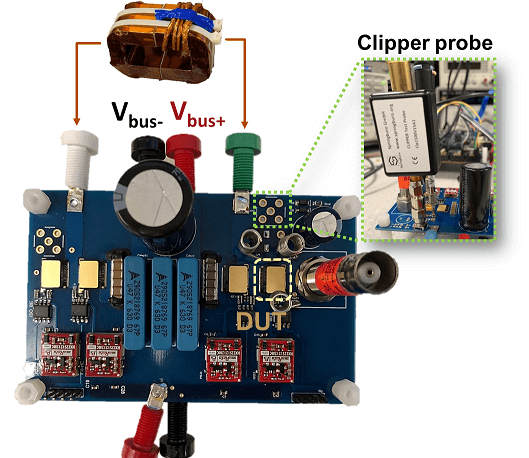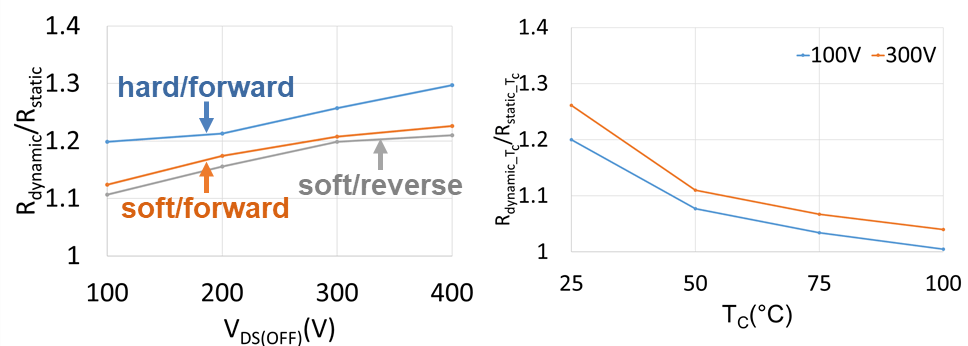LIBRARY
Dynamic RDS(on) Evaluation of 650 V GaN e-HEMT Devices in Forward and Reverse Conduction Mode

A full-bridge circuit is used to compare dynamic RDS(on) under different working conditions in DPT. In the test before double-pulse is triggered, the device under test (DUT) is kept on to avoid an extra uncontrollable voltage stressing period, which has a large impact on the dynamic RDS(on) value and leads to unfair comparison between dif- ferent conditions. A resistor is added in the circuit to prevent a short circuit during the initial on-time and control case temperature by tuning the dc current. Additionally, static RDS(on) can be obtained in- stantaneously before DPT during the dc current conduction period. Therefore, static and dynamic RDS(on) are measured using the same method and under the same conditions. Three operation modes are designed to investigate the impact of off-state voltage, switching function and current conduction direction at room temperature. In all three cases, RDS(on) is calculated by Ohms law during the second on-state period following a controllable off-state voltage stress. Instead of using the clamping circuit, a clipper test probe as shown in Fig.1 is used to measure VDS(on), which retains accuracy when the device is heated.
Ratios of dynamic RDS(on) over static RDS(on) under different working conditions are shown in Fig. 2. In each mode, dynamic RDS(on) is extracted at 1 ?s after the device under test turns on. It is obvious that at room temperature dynamic RDS(on) is higher as the off-state voltage bias increases, which is consistent with the general understanding of GaN HEMT devices from previous work. Furthermore, dynamic RDS(on) following hard switching is higher after soft switching due to the impact of hot electron injections. However, there is not much difference between different current conduction direction. At room temperature, dynamic RDS(on) is 30% higher than static RDS(on) in the worst case. While at high temperature this issue is less severe, the dynamic RDS(on) value is closer to the static one as the case temperature increases. Lastly, a series resonant converter is employed for soft-switching continuous tests. Dynamic RDS(on) variation with the converter running under a different saturation temperature can be tested by this converter.























































































